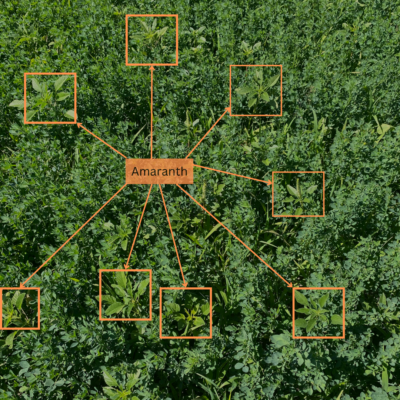I have received several phone calls from producers with concerns about toxic plants or noxious weeds in hay. Most of the time grazing animals avoid these toxic plants, and prefer to as weeds are typically unpalatable. However, when the animal is consuming hay or a mixed ration contaminated by these toxic plants, it is difficult for the animal to avoid them. Here are four key points hay and livestock producers should understand about noxious weeds in hay:
1. Necropsy
When losses occur and the culprit is potentially noxious weeds, a necropsy can provide invaluable information. There are many compounds in many varieties of toxic plants which can cause livestock death however, nitrate is the most common culprit. Many common weeds, which are accidentally put up with hay, are nitrate accumulators. Pigweed and Kochia weed are two common potentially toxic plants. I see these species in hay samples weekly at Ward Laboratories, INC. If given the chance, a good veterinarian will be able to identify nitrate poisoning during a necropsy performed within a reasonable time after the animal’s death. The animal’s blood would be chocolate brown due to the lack of oxygen binding to hemoglobin in nitrate toxicity. This also would allow for a producer to test the fed bale for nitrates to see how it compares with the rest of the hay lot.
2. Uncommon Compounds
It is difficult to identify toxic levels of less common compounds such as alkaloids. The only toxicological analyses Ward Laboratories, Inc. runs are nitrate and prussic acid. Beyond those two compounds, samples need to be sent out to state vet labs or other toxicology labs. Those laboratories need to know specifically which toxic compound they are looking for. These analysis can be expensive. There is no noxious weed toxicity screening.
3. Even Known Species are Difficult
If the producer knows the species of weeds causing toxicity issues, Ward Laboratories, INC. will do our best to find another lab to test for the specific toxin that plant produces, but sometime even we hit dead ends. For example, I had a producer concerned about nightshade in his hay. After speaking with professionals and toxicologists at four different laboratories, the conculusion was that the hay needed to be burned. No lab was willing to accept the liability of differentiating the toxic level of such a highly variable sample as hay. So, to avoid risking animal losses and to destroy the seed bank, the entire lot of hay needed to be burned.
4. Avoid Haying Toxic Plants From the Begining
Once hay is in a bale, it is difficult for even skilled professionals to identify noxious weeds in hay. The best thing for a hay producer to do is monitor fields and know what potentially toxic plants are in their production area. Avoid baling areas with dense weed populations or at a minimum seperate those bales as potentially toxic feed to give producers the best chance to make a good production decision regaurding what to do with that feed. If you are buying hay, speak with the hay producer and buy from someone with a good reputation who you trust.
Noxious weeds in hay can be a deadly problem and a difficult one to solve and identify after the fact. There is little laboratory testing can do to prevent the issue or identify it after the fact. Producers of hay are encouraged to be aware of what they are baling and what plants are growing in their fields. Livestock producers need a basic ability to identify some toxic plants to avoid feeding contaminated hay and help themselves solve problems when an issue does arise.




